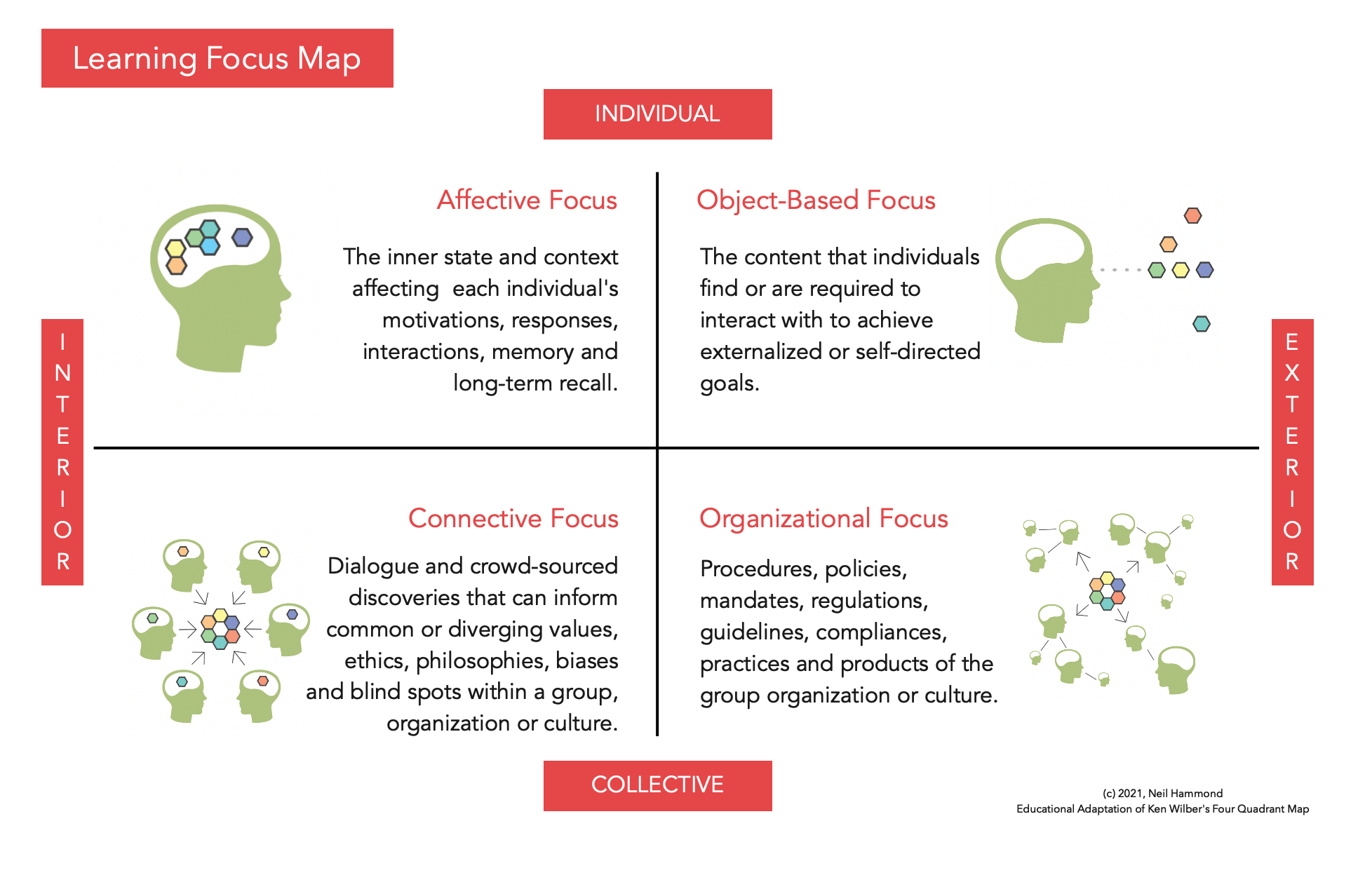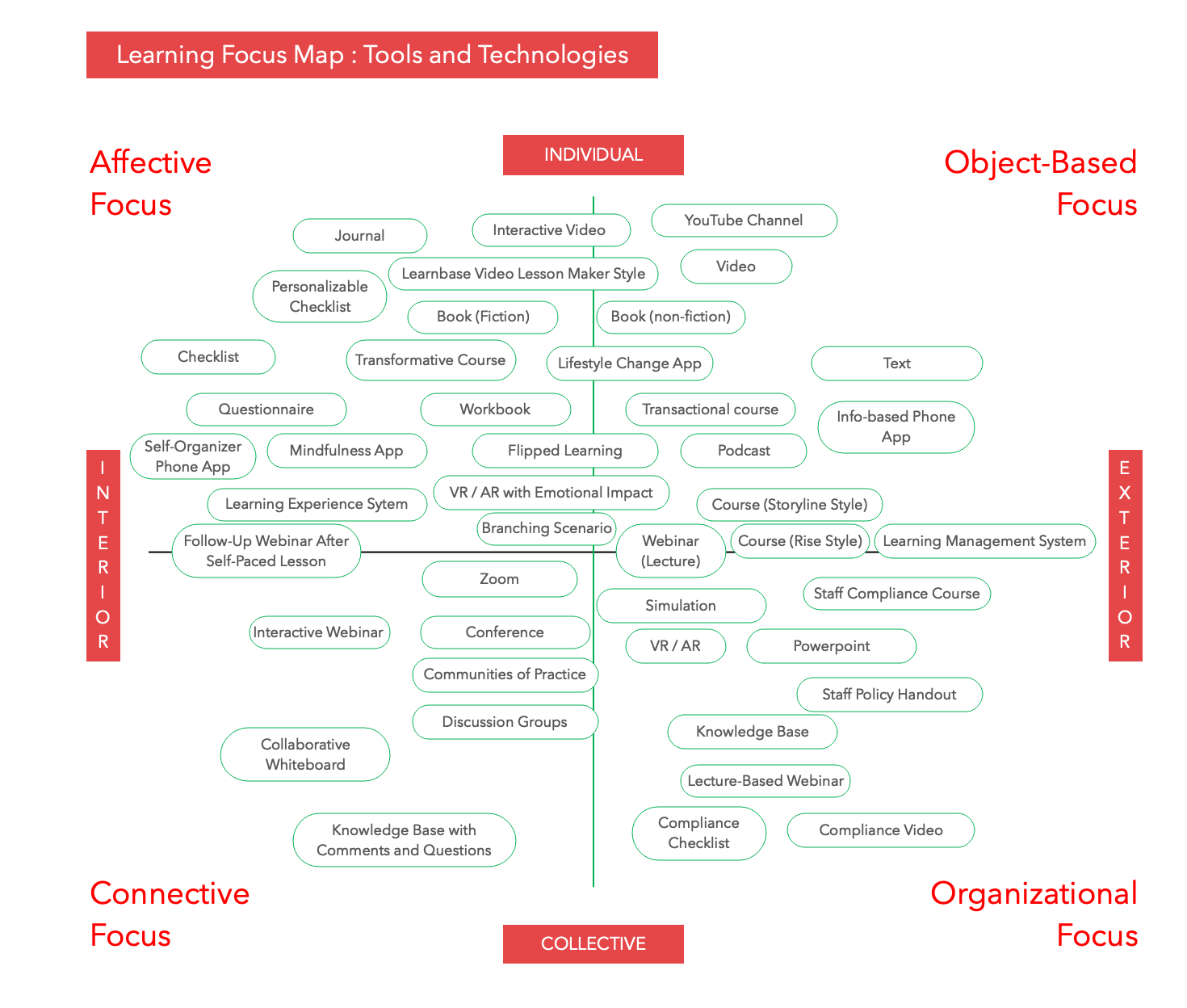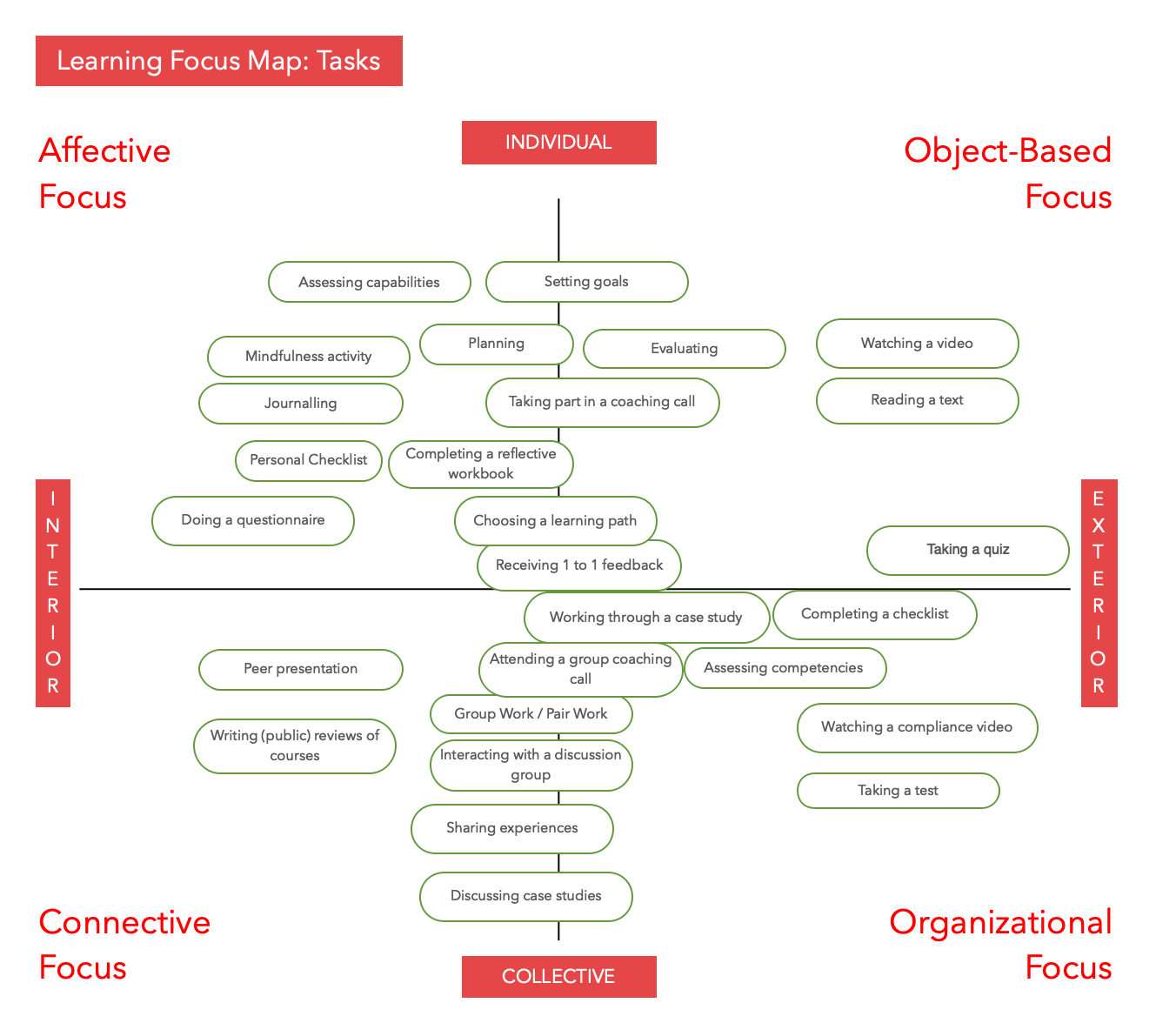
So far we’ve discussed more theoretical aspects of the Learnbase Learning Focus Map, part of our adaptation and application of Integral Theory to adult learning design. In this post we’ll bring it sharply into focus with a look at how specific tools, tasks and technologies map onto specific quadrants.
Let’s quickly revisit the four quadrants in case you’ve just landed here:

Let’s layer over this map some typical tools, techniques and technologies pervasive within the landscape of adult learning:

We’ve sought to place the tools in their default positions. As usual each placing is suggestive not absolute (we explore this more in the next post).
We use this map when working with client teams to assess their existing programs or their suggestions for new projects. In this way, client teams see fairly instantly where biases may lie. We can then assess the extent to which those biases either match the context and capacity of the project, or if they are emanating from a more residual set of expectations that may need some expanding.
Sometimes only small adjustments are required. For example, in cases where an over-emphasis on an organizational focus has been identified, we may consider widening assessment from purely quantitative formats, such as multiple choice tests, to more quantitative solutions like ‘noticing-based’ journaling. Or, where a list of organization-prescribed course recommendations can be expanded, we may include reviews, ratings and commentary from their public. This approach crowdsources input and adds a connective aspect to expand the field of possibility in an otherwise purely organizational approach.
At other times the shift may be more wholesale. For example, we may consider transitioning from exterior organizational Powerpoint or Storyline approaches to more transformative, constructivist formats like our own Learnbase Video Lesson Maker, or connective ones like the Project Echo communities of practice found in clinical/medical professional development.
Its also helpful to take a look at this from the point of view of tasks we may invite learners to consider:

When storyboarding interactive lessons for example, it’s useful to use this more ‘verb-based’ map. We always stress that the most important factor is not what learners are being presented with at each stage, but what they will be doing with the information at each stage.
If a subject matter expert’s ‘learner ask’ in each section of the lesson is ‘watch/listen’ (and it frequently is just that!) we know something is wrong with the planning. We can work with the client to consider a more mixed set of tasks to suit the context.
Equally important, we can check for focus-bias that does not fit the focus objectives. For example, where an organization has identified an objective to personalize and individualize their approach, existing organizationally-defined competency-based learning paths may be expanded to include individual capability aspects.
These maps are incredibly useful for helping organizations observe how offerings and objectives align and where there may be gaps. Filling the gaps is not about throwing out and replacing the old, it’s about broadening and expanding the field of possibility.
Again, the precise positioning of the tools and tasks is open to discussion. In the next post we’ll look at how any one of these tasks can be can be approached and explored from a four-quadrant perspective: https://learnbase.com/mapping-possibilities-video/